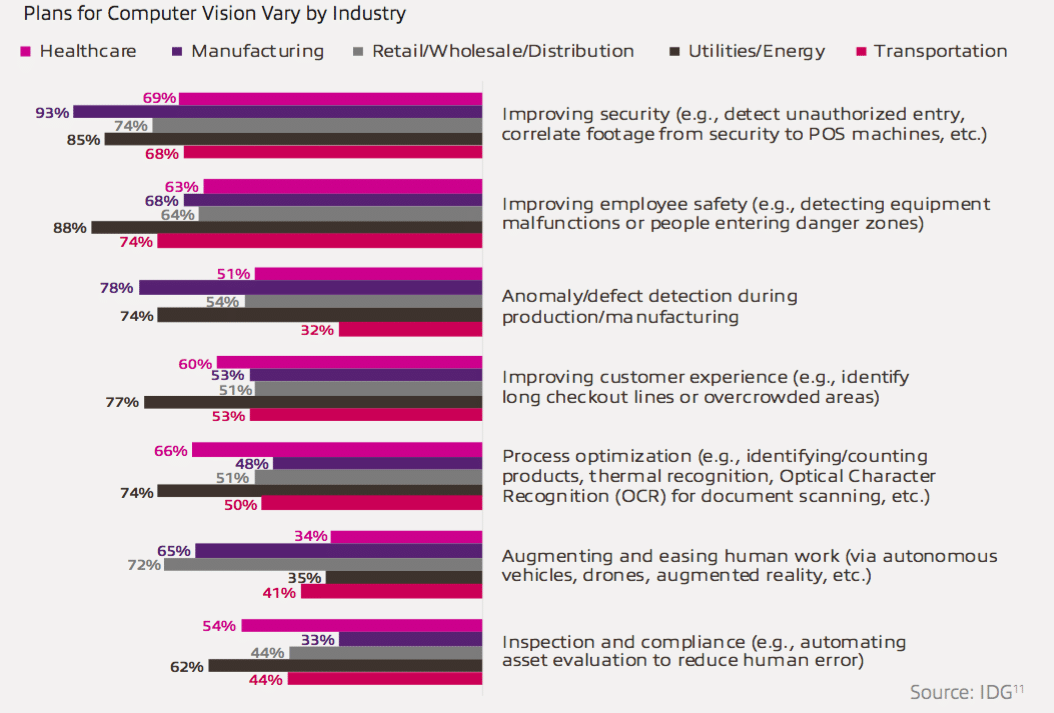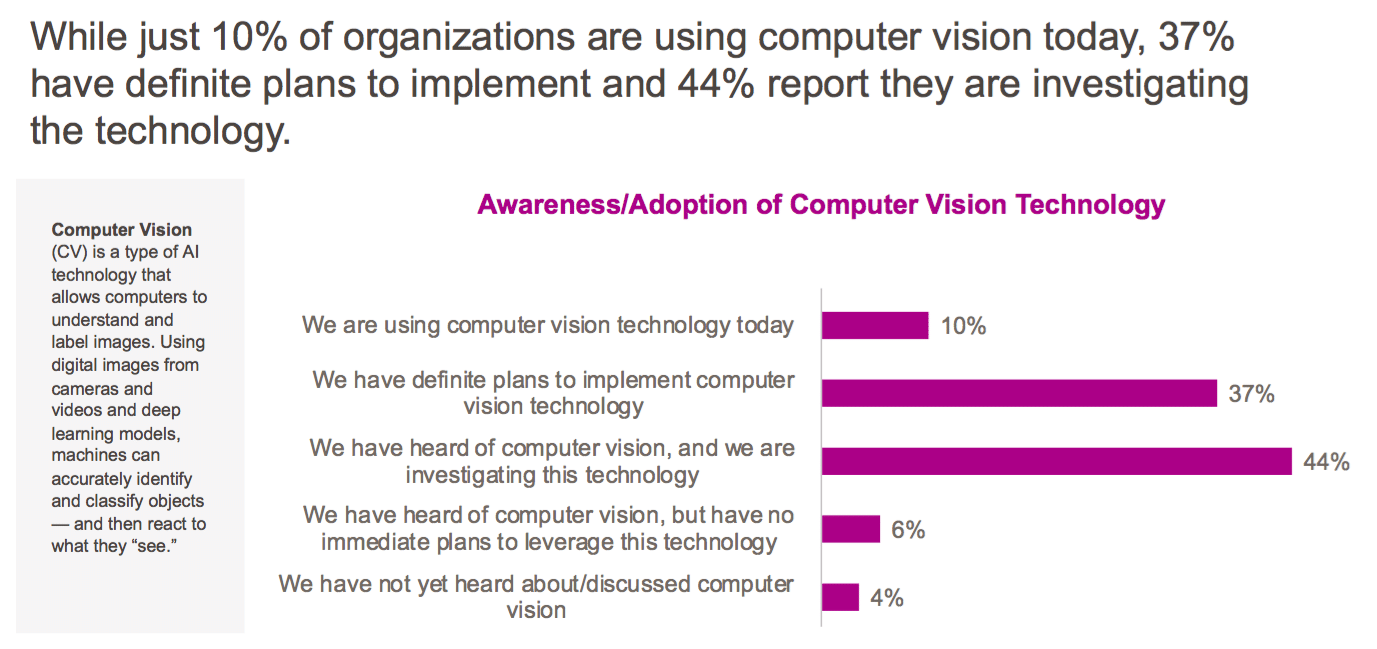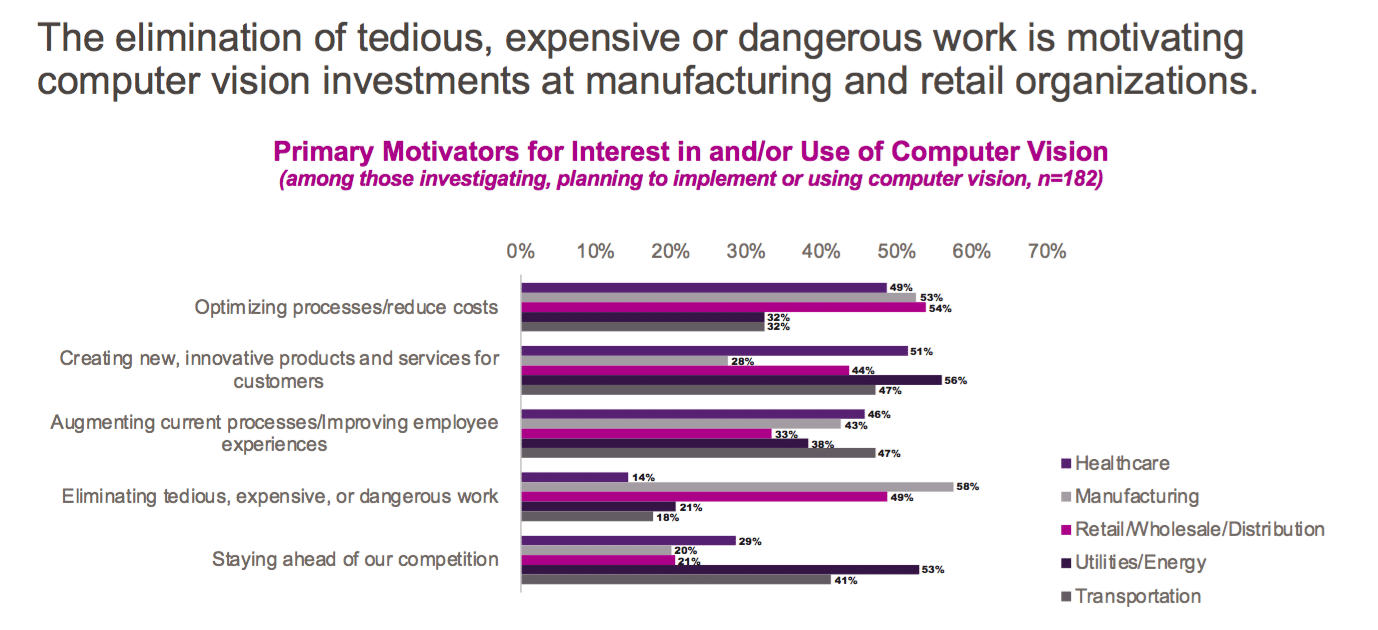The digital age has ushered in myriad changes in content creation, display and demand, predominantly in the form of images and other multimedia to accompany standard text and lure the eyeballs and interest of younger consumers. New research from technology business firm Insight aims to better understand the awareness, adoption and perceptions of computer vision (CV), a type of Artificial Intelligence technology that allows computers to understand and label images.
The firm’s new report, Early Adopters See Value in Computer Vision, based on survey research by IDG, explores how using digital images from cameras and videos and deep learning models, machines can accurately identify and classify objects—and then react to what they “see.”
The report indicates that the overwhelming majority of respondents agree that CV has incredible potential to transform key areas of business, including growing revenue (97 percent) and saving time and money (96 percent). While only 10 percent of organizations are using computer vision today, 37 percent said they have definite plans to implement and 44 percent report they are investigating the technology.
“We were not surprised to find computer vision squarely in the awareness phase,” said Amol Ajgaonkar, chief architect of Intelligent Edge at Insight, in a news release. “It’s an extremely complex emerging technology that requires a significant investment, with an average return of two to three years and real-world examples just starting to materialize to prove the business case. However, the upside is incredible, and as more organizations shift from investigating to investing in the visual side of AI, those that get ahead of the curve and effectively capture ROI will gain a significant advantage in their respective fields.”
Business executives understand the value of computer vision
The possibilities for how CV can be implemented are endless and span from operations to consumer experiences, with 45 percent citing opportunities for cost cutting and efficiency gains, while an equal percentage cite it as an innovation driver, including bringing new products and services to market.
The top four cited ways organizations have or are planning to implement CV include:
- Improving security, e.g., detecting unauthorized entry (78 percent)
- Improving employee safety, e.g., detecting equipment malfunctions (71 percent)
- Anomaly defect detection during production/manufacturing (58 percent)
- Improving customer experiences, e.g., identify long checkout lines or overcrowded areas to redirect traffic or bolster customer service where needed (58 percent)
“If you imagine a world where workers didn’t have to go into ‘danger zones,’ or quality control moved from a manual review process to an entirely automated one, intelligent use of cameras can orchestrate smoother operations,” said Ajgaonkar. “We recently worked with a printer ink manufacturer to use computer vision to count pallets with the quick snap of photos, enabling people with disabilities to take on greater warehouse responsibilities while creating more accurate inventory counts. Similarly, we’ve helped a steel company identify hazardous materials before they inadvertently land in a smelter to be recycled. A new, intelligent view on manufacturing processes can bring immediate benefits like these.”
Goals for implementing computer vision vary based on industry
Business executives see clear advantages to how computer vision can improve their organizations, including:
- The elimination of tedious, expensive or dangerous work is a motivation for 58 percent of manufacturers and 49 percent in retail and wholesale distribution.
- Augmenting current processes and improving employee experiences is a driving factor for 47 percent in the energy sector, 46 percent in healthcare and 43 percent in manufacturing.
- 53 percent in the energy and utility sector say it’s a way to stay ahead of the competition, and 41 percent from transportation agree.
- The energy (56 percent) and healthcare (51 percent) sectors recognize that the technology can help to deliver new, more innovative products and services to their customers. Only 44 percent of retailers ranked this outcome as a priority, indicating that they may be missing an opportunity for growth and differentiation.
Download the full report here.
The research was conducted online by IDG Research Services among 200 IT decision makers at enterprise organizations with 1,500 or more employees, evenly distributed across the healthcare, utilities/energy, transportation, manufacturing and retail/wholesale/distribution industries. The margin of error for a sample size of 200 is +/-6.9 percentage points at the 95% confidence level. Data collection was completed between April 19, 2021, and May 3, 2021.










